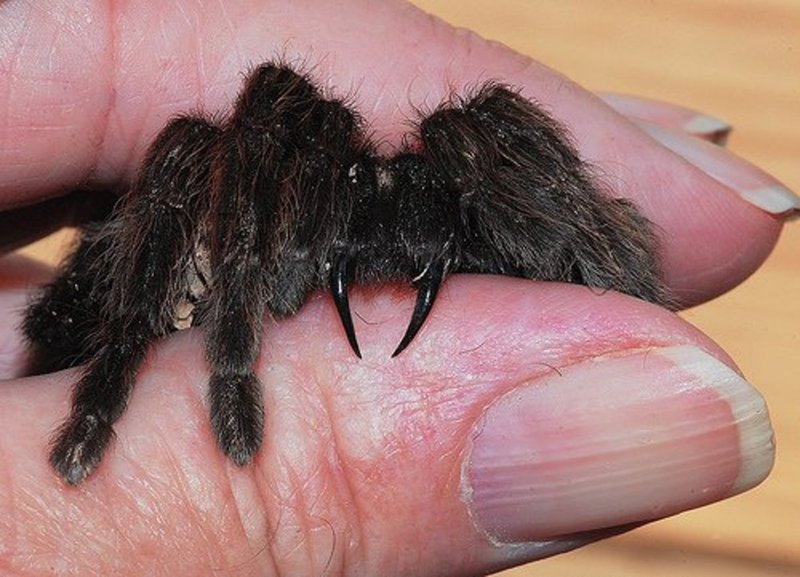
First off, the skeleton tarantula, known scientifically as *Haplopelma lividum*, is famous for its vibrant colors and fearsome reputation. This species is native to Southeast Asia and is often kept as an exotic pet. However, just because it looks intimidating doesn’t mean it’s out to get you. Understanding their behavior and what to expect can clear up a lot of confusion.
In this article, we’ll explore the biting habits of the skeleton tarantula, what their bites feel like, and how to handle them safely. Whether you’re considering one as a pet or just curious about them, I’ll guide you through everything you need to know.
The Nature of Skeleton Tarantula Behavior
To grasp whether a skeleton tarantula bites, it’s essential to first look at its behavior. These spiders are more skittish than aggressive. Typically, they prefer to avoid confrontation. When threatened, they may display defensive actions, like raising their front legs or showing off their fangs. It’s their way of saying, “Back off!”
Interestingly, skeleton tarantulas are burrowing spiders. They spend most of their time hiding in underground tunnels, away from potential dangers. This behavior makes them less likely to encounter humans unless handled improperly. It’s worth noting that their initial reaction is often to flee rather than fight.
When you think about it, it’s like a cat that hisses instead of scratching. They might look fierce, but they’d rather run away than engage. So, if you’re in the same room as a skeleton tarantula, don’t expect it to come rushing at you. That’s the good news!
What Does a Bite Feel Like?
If you’re curious about the potential sting of a skeleton tarantula bite, here’s the gist. Their bites aren’t as dangerous as you might think. While some may imagine it feeling like a wasp sting—which can be quite painful—many enthusiasts report that it’s more like a sharp pinch.
Here’s what you might experience if bitten:
- Pain Level: Generally mild to moderate.
- Swelling: Minimal swelling may occur, similar to a bee sting.
- Redness: Some redness at the bite site, but this usually fades quickly.
- Allergic Reactions: Rare, but possible for sensitive individuals.
For most people, the bite is a temporary annoyance rather than a serious medical issue. However, it’s always best to be cautious. If you’re allergic to other spider bites, it’s wise to consult with a healthcare professional before getting too close to a skeleton tarantula.
When Do Skeleton Tarantulas Bite?
You might be wondering, “Under what circumstances would a skeleton tarantula actually bite?” Understanding the triggers can help you avoid a painful experience. Generally speaking, these spiders only bite when they feel cornered or threatened.
Here are a few common situations that might lead to a bite:
- Handling: If you’re not experienced in handling spiders, they may bite when you try to pick them up.
- Disturbance: Bumping into their habitat may provoke a defensive response.
- Stress: Sudden movements or loud noises can scare them into biting.
The key takeaway? Always approach them with care. If you’re a beginner or unsure how to handle them, it’s smarter to observe rather than engage directly.
How to Handle a Skeleton Tarantula Safely
If you’re thinking about handling a skeleton tarantula, remember that safety is paramount. Here are some tips to keep in mind:
1. Get Comfortable: Before you even think about handling, take your time to observe your spider. Let it get used to your presence.
2. Use a Container: If you need to move it, use a safe container. Make sure it’s escape-proof and has good ventilation.
3. Gentle Touch: When you do handle them, use gentle movements. Fast motions can startle them into biting.
4. Know When Not to Handle: During molting, skeleton tarantulas are especially vulnerable. Avoid handling them during this time.
Remember, handling isn’t always necessary. Just admire their beauty from a safe distance if you’re uneasy.
Are Skeleton Tarantulas Dangerous as Pets?
If you’re considering a skeleton tarantula as a pet, a lot depends on your comfort level with spiders. While they can bite, the risks are low for most people. They are generally more defensive than aggressive.
However, here are some things to think about:
- Care Requirements: Like all tarantulas, they need specific environments, including humidity and temperature control.
- Temperament: Their shy nature means they’re not as interactive as some other pets. If you’re looking for a cuddly companion, they may not fit the bill.
- Longevity: Tarantulas can live for many years. Consider if you’re ready for a long-term commitment.
Ultimately, if you love unique creatures and are willing to learn, a skeleton tarantula can be a rewarding pet. Just be prepared for some hands-off moments!
So, does the skeleton tarantula bite? Yes, it can—but only under specific circumstances. Understanding their behavior and taking proper precautions can help you avoid bites. These fascinating creatures might look intimidating, but they can be safely admired and even kept as pets with the right knowledge.
If you’re a beginner in the world of tarantulas, remember that it’s all about respect and understanding. Whether you decide to keep one or just appreciate their beauty from a distance, you now have the information to navigate your curiosity safely. Enjoy the journey into the intriguing world of skeleton tarantulas!

